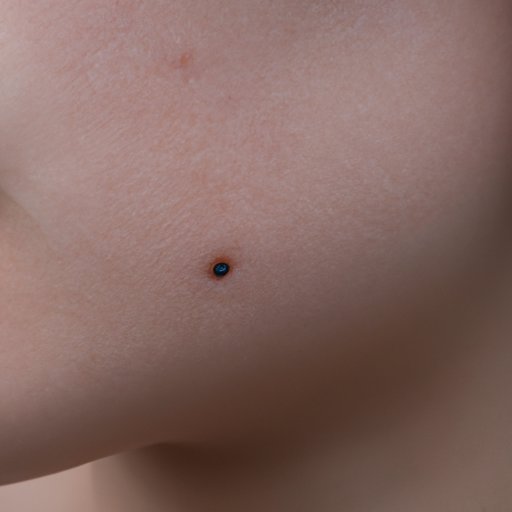
Introduction
Beauty marks, also known as moles, have been a part of human features for centuries. From Marilyn Monroe’s iconic beauty mark to Cindy Crawford’s signature mole, beauty marks have been embraced by some and removed by others. But what do beauty marks mean and why are they still a topic of discussion in today’s society? This article will cover the historical, cultural, and scientific perspectives of beauty marks, as well as their role in modern self-confidence and beauty standards.
A Historical Perspective
Beauty marks have been viewed differently throughout history and across cultures. In ancient Greece, beauty marks were considered a sign of elegance and were even painted on the skin to enhance beauty. In the Middle Ages, however, they were often seen as blemishes and marks of the devil. In Japan, beauty marks were popularized by geishas and considered a symbol of beauty and sensuality. In some cultures, the placement of beauty marks had significant meanings related to personality and destiny.
The Science Behind Beauty Marks
Beauty marks are formed when a cluster of cells called melanocytes (which produce the pigment melanin responsible for skin color) grows in a group instead of spreading out. This results in a small, dark spot on the skin. There are different types of moles, including junctional, compound, and dermal moles, each with unique characteristics and risks. Some beauty marks may fade or change over time, while others may remain unchanged for years.
Self-Confidence and Beauty
The acceptance of beauty marks in today’s society has fluctuated over time. In the 18th century, women would use makeup to draw on beauty marks to appear fashionable. In the 20th century, the beauty industry encouraged people to remove beauty marks, which were often considered unsightly. Nowadays, with the growing emphasis on body positivity and unique beauty standards, people are embracing their beauty marks as a symbol of individuality and beauty.
Superstitions and Myths
There are many superstitions and myths surrounding beauty marks. In some cultures, beauty marks are considered lucky, while in others, they are a sign of bad luck or even a curse. In China, a mole on the cheek is a symbol of beauty and good fortune, while a mole on the forehead indicates intelligence. In ancient astrology, beauty marks were even thought to determine one’s personality traits and destiny.
Health Implications
While most moles are harmless, some may have health implications. Moles that appear irregular or change over time may be a sign of melanoma, a type of skin cancer. It is important to regularly monitor your beauty marks and seek medical attention if necessary. Preventive measures, such as wearing sunscreen and protective clothing, can also reduce the risk of skin cancer.
Conclusion
Beauty marks have played a significant role in human history and continue to influence modern perspectives on beauty. They are a unique aspect of individuality and can contribute to one’s overall appearance. By celebrating our beauty marks and monitoring them for possible health risks, we can embrace our natural features and enhance our self-confidence.





